Upflex sat down (virtually) with Blender Workspace marketing manager John Morgenstern to talk design as a differentiator for space operators, and how the world of workspace is taking cues from the hospitality industry.
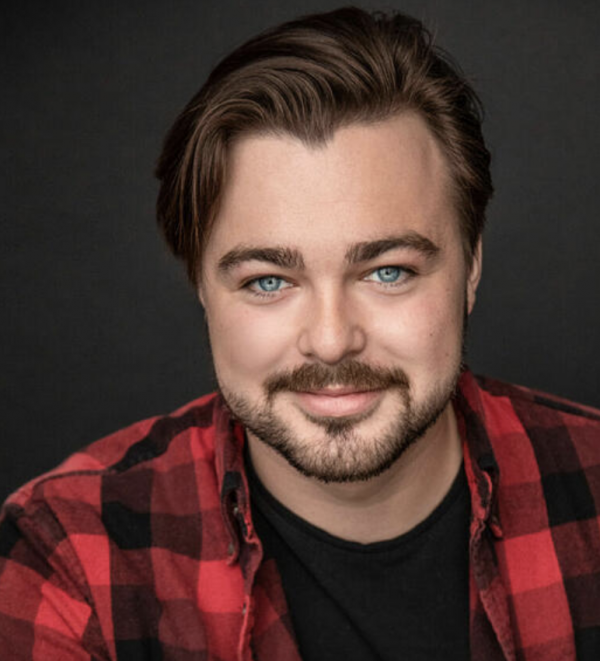 In the NoMad District of Manhattan, hybrid and remote workers aren’t short on options for high-end coworking experiences. So what makes a space pop off the map? Independent luxury coworking provider Blender Workspace has comprehensive offerings: a central location, 30 private offices, 35 dedicated desks, three meeting rooms, six lounges, three privacy booths, and a 3,000-square-foot event space and café.
In the NoMad District of Manhattan, hybrid and remote workers aren’t short on options for high-end coworking experiences. So what makes a space pop off the map? Independent luxury coworking provider Blender Workspace has comprehensive offerings: a central location, 30 private offices, 35 dedicated desks, three meeting rooms, six lounges, three privacy booths, and a 3,000-square-foot event space and café.
But that isn’t what Blender social media and marketing manager John Morgenstern would point to as the space’s big differentiator: Rather, Morgenstern says, Blender members join because they love being in a workspace with such a dedicated hospitality focus that “feels more like a boutique hotel than an office.”
Morgenstern did some copywriting for Blender’s in-house journal and events production outfit before leaving for a full-time role at the McKittrick Hotel—the fictional hotel best known for the immersive, site-specific, unforgettably surreal reimagining of Shakespeare’s Macbeth, Sleep No More. He was lured back to Blender for a part-time marketing position.
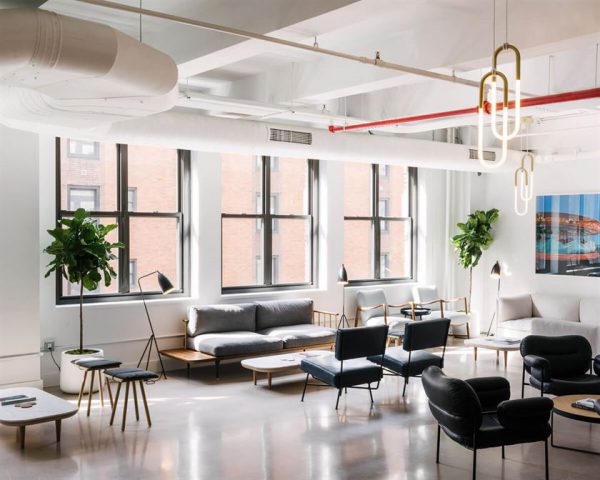
Blender Workspace in NoMad, Manhattan, NYC. Check it out at explore.upflex.com
Like Morgenstern, all Blender’s staff comes from hospitality and events backgrounds, and that shows — not only in the space’s inviting, inclusive vibe and show-stopping design, but in their events offerings: Via Blender’s “hybrid events” programming, they’ve helped their members host remote events, live streams, product launches, seminars, conferences, tastings, fashion shoots, and more, offering a menu of services from catering to A/V production.
Upflex sat down with Morgenstern to talk coworking trends, design and hospitality.
Design is a big differentiator for Blender. I know you had the sought-after design firm Parts and Labor design your space, which has done some very hot boutique hotels and restaurants—and Blender was their first-ever office. How are you seeing workspace and hospitality fuse, both at Blender and industry-wide?
John Morgenstern: Our mission is to redefine the work/life balance with the creation of authentic spaces, that cultivate a community of like-minded thinkers and enables the growth and development of their life’s work. Everything stems from a hospitality approach. First and foremost, Blender is designed for our members. In crafting the space, we wanted an environment that is aspirational. We provide a high-end, luxury platform to elevate our members’ products. It feels more like a boutique hotel, equipped to accommodate any of our members’ needs, rather than an office.
To achieve this, we worked with Parts and Labor Design—who had never designed an office space before. Every aspect of our design involves boutique designers. Our desks are by Nicaragua-based Maderas Collective, lighting by Allied Maker, Gubi, Lambert & Fils, Roll and Hill, and our furniture by the incredibly talented craftsmen at Fogia, Lawson Fenning and Overgaard & Dyrman. Even the jungle-inspired wallpaper in the bathrooms is by London-based Witch and Watchman.
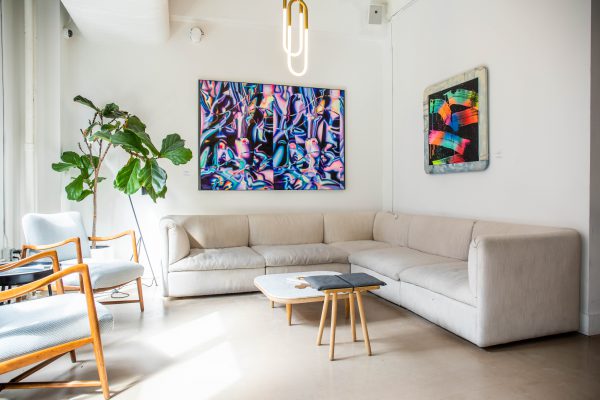
Blender Workspace in NoMad, Manhattan, NYC. Learn how Upflex users can book workspace at Blender.
I absolutely agree that office trends are moving away from the traditional cookie-cutter design. On a larger scale, the entire idea of work life is being rethought with the implementation of remote work, four-day workweeks, and overall emphasis on mental health.
“It feels more like a boutique hotel, equipped to
accommodate any of our members’
needs, rather than an office.”
Because of this, the office environment has been changing to what I believe is leaps and bounds more positive and sustainable. Specifically in design, we’re seeing more natural light, casual common areas, and home-like amenities replacing cubicles, harsh fluorescent lights, and the general milieu of grey. It’s becoming a simple question: “Would you want to spend eight hours here?”
What do you see members looking for in a workspace now? Any new or different use cases you’ve seen playing out at Blender / Any trends among Blender users this year that feel different, notable or new?
Morgenstern: Flexibility. That has been by far the biggest trend we’ve seen new members looking for. With everything that has been going on, it’s not hard to see why people don’t want to commit to anything too long-term.
The biggest change we’ve seen between now and in the thick of 2020 is that more and more companies have been seeking space for hybrid work, and off-site meeting group spaces.
“I absolutely agree that office trends are moving
away from the traditional cookie-cutter design…
It’s becoming a simple question: ‘Would
you want to spend eight hours here?'”
Remote work definitely has its positives, but the biggest downside is the lack of connection. It’s easy to feel isolated within a team when all you’re doing is emailing and video chatting. We’ve seen such positive results when companies get together for a weekly or monthly check-in, and it’s been amazing to see people reconnect face to face.
One of the biggest considerations for people getting to work outside their houses again has of course been health and safety. Anything in particular that Blender has worked to do there to put users* at ease?
Morgenstern: The health of our members has been and always will be our top priority. For our members and any guests, proof of vaccination against COVID-19, or a negative COVID test from within 24 hours before your booking is required upon check-in.
“The biggest change we’ve seen between
now and in the thick of 2020 is that more and
more companies have been seeking space for hybrid
work, and off-site meeting group spaces.”
We’ve increased our daily cleaning schedules, as well as the building’s, and we closely monitor New York’s guidelines and recommendations. Additionally, our regularly maintained twin 20-ton custom HVAC system is outfitted with HEPA filtration and fresh air intake functionality to provide clean air circulation.
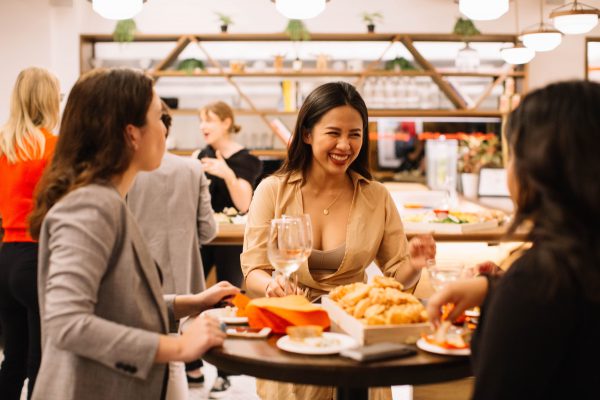
Scenes from the GirlBossXBlackRock Event at Blender Workspace in NoMad, Manhattan, NYC. Check it out at explore.upflex.com.
You left the McKittrick to return to a new role at Blender. What lured you back?
Morgenstern: The Social Media & Marketing Manager position I was offered was too good to pass up. I really enjoyed my time as a copywriter, so I was glad to be back. Blender’s design first attracted me, and our emphasis on hospitality kept me invested. Before joining my only experience with coworking spaces was what I had read about with WeWork. Now, I’ve been exposed to so many incredibly designed workspaces I feel like I’m witnessing the forefront of innovation on what the modern office can be. I also couldn’t talk about why I love Blender without mentioning our members. We have some truly awe inspiring members working in our space, and seeing their work is a constant inspiration.
Book a desk at Blender Workspace on Upflex.
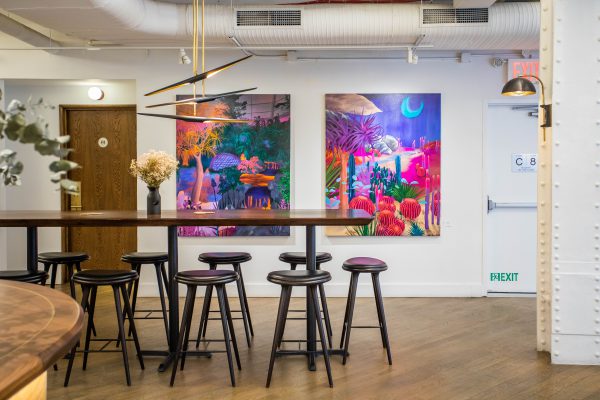
Blender Workspace in NoMad, Manhattan, NYC. Book a workspace at Blender in the Upflex app.


